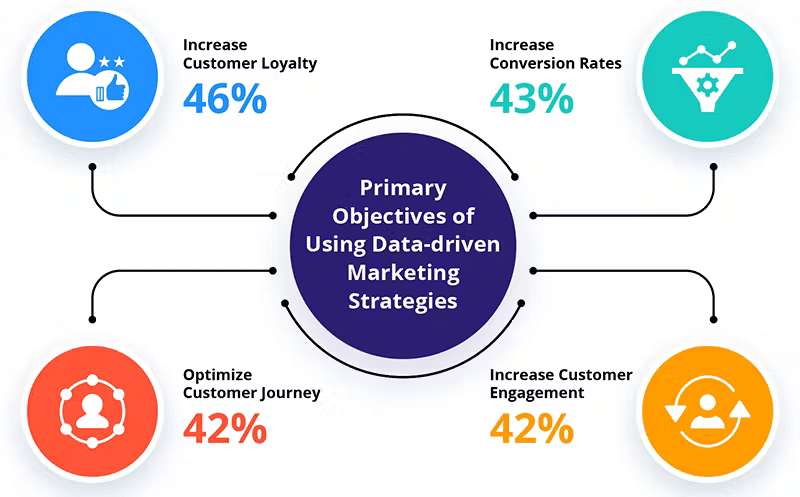Introduction
In the digital age, organizations generate and rely on vast amounts of data to make informed decisions, improve customer experiences, and streamline operations. However, raw data in its initial form is often scattered, inconsistent, and difficult to analyze. This is where data pipeline architecture comes into play. It provides a structured framework to collect, process, and deliver data for analysis and reporting. Understanding how data pipeline architecture works is crucial for businesses aiming to harness the full potential of their data assets.
This article explores the five key steps in a data pipeline architecture while emphasizing the three main stages that form its core. By the end, you’ll understand how modern data pipelines function and why they are essential for any data-driven organization.
What is Data Pipeline Architecture?
Data pipeline architecture refers to the systematic design and organization of processes that move data from its source to its destination, typically a data warehouse, data lake, or analytical platform. This architecture ensures that data flows efficiently, remains accurate, and arrives in a usable format for analysis.
The architecture typically includes components such as data ingestion, transformation, storage, and delivery. Depending on the organization’s needs, it often involves both batch processing and real-time (streaming) data processing. A well-designed data pipeline architecture simplifies complex data workflows, enhances data quality, and ensures timely access to actionable insights.
The Main 3 Stages in a Data Pipeline
While a data pipeline can consist of multiple steps, its core can be broken down into three main stages: data ingestion, data processing, and data storage. Let’s explore each stage in detail.
1. Data Ingestion
Data ingestion is the first stage of the data pipeline, where raw data is collected from various sources and imported into the pipeline. These sources can include databases, APIs, sensors, applications, social media platforms, and more.
In this stage, data can be ingested in two primary modes:
- Batch Processing: Data is collected and processed in chunks at scheduled intervals. This method is ideal for scenarios where real-time analysis is not critical.
- Real-Time (Streaming) Processing: Data is continuously collected and processed as it is generated. This approach is suitable for time-sensitive applications, such as fraud detection or real-time analytics.
Challenges in the ingestion stage include handling large volumes of data, ensuring data quality, and managing data from diverse formats and sources. Effective data pipeline architecture employs robust connectors and data validation techniques to overcome these challenges.
2. Data Processing (Transformation)
Once the data is ingested, it moves to the processing stage, where it is cleaned, transformed, and organized for further use. This stage is often referred to as ETL (Extract, Transform, Load) or ELT (Extract, Load, Transform), depending on the sequence of operations.
Key tasks in the processing stage include:
- Data Cleaning: Removing duplicates, correcting errors, and handling missing values.
- Data Transformation: Converting data into a consistent format, applying business rules, and enriching the dataset.
- Data Validation: Ensuring data accuracy, consistency, and integrity.
Modern data pipelines often leverage distributed processing frameworks like Apache Spark or cloud-based platforms to handle large-scale transformations efficiently.
3. Data Storage
After processing, the data is stored in a centralized location, such as a data warehouse, data lake, or hybrid storage system. The choice of storage depends on the organization’s requirements for data accessibility, querying capabilities, and cost efficiency.
- Data Warehouse: Structured storage optimized for querying and reporting. Common platforms include Snowflake, Amazon Redshift, and Google BigQuery.
- Data Lake: Flexible storage for structured, semi-structured, and unstructured data. Popular solutions include Amazon S3, Azure Data Lake, and Hadoop.
- Hybrid Storage: Combines the strengths of both data warehouses and data lakes, often referred to as a “data lakehouse.”
Efficient data storage ensures that data remains organized, secure, and easily retrievable for downstream analytics and machine learning applications.
The 5 Key Steps in Data Pipeline Architecture
Beyond the three core stages, a complete data pipeline architecture involves five key steps that ensure seamless data flow from source to destination:
1. Data Collection (Ingestion Stage)
Data collection involves gathering raw data from multiple sources, including databases, cloud applications, logs, IoT devices, and external APIs. This step ensures that all relevant data is captured and funneled into the pipeline.
Effective data collection requires robust connectors, data extraction tools, and monitoring systems to detect failures or inconsistencies during ingestion.
2. Data Preprocessing (Processing Stage)
In the preprocessing step, raw data undergoes initial cleaning and formatting to prepare it for transformation. This includes removing noise, handling null values, and standardizing formats.
Preprocessing is crucial for ensuring that the subsequent transformation step operates on high-quality data, minimizing errors and inconsistencies.
3. Data Transformation (Processing Stage)
Data transformation involves converting raw data into a structured, usable format. This step includes filtering, aggregating, enriching, and applying business logic to make the data meaningful.
Transformation can occur before or after loading, depending on whether an ETL or ELT approach is used. Tools like Apache Spark, AWS Glue, and dbt (data build tool) streamline this process.
4. Data Storage (Storage Stage)
Processed data is stored in a centralized repository, such as a data warehouse or data lake. This storage enables efficient querying, reporting, and advanced analytics.
Data storage solutions often include partitioning, indexing, and encryption to optimize performance and security.
5. Data Visualization and Analysis (Delivery Stage)
The final step involves making the processed data available for consumption by analysts, data scientists, and business users. This includes integrating with business intelligence (BI) tools like Tableau, Power BI, or Looker.
Real-time dashboards, reports, and predictive models leverage the processed data to provide actionable insights and drive informed decision-making.
Benefits of a Well-Designed Data Pipeline Architecture
Implementing an efficient data pipeline architecture offers several advantages:
- Improved Data Quality: Automated validation and transformation ensure accurate and consistent data.
- Faster Insights: Real-time processing enables quicker decision-making based on up-to-date information.
- Scalability: Modern data pipelines handle increasing data volumes without compromising performance.
- Cost Efficiency: Efficient resource allocation reduces infrastructure and storage costs.
- Enhanced Collaboration: Centralized, organized data allows cross-functional teams to collaborate effectively.
Challenges in Data Pipeline Architecture
While data pipelines offer significant benefits, they also present challenges, including:
- Data Silos: Inconsistent data sources can lead to fragmented insights.
- Pipeline Failures: System failures, network issues, or malformed data can disrupt data flow.
- Security Risks: Improper access controls can lead to data breaches.
- High Maintenance: Complex pipelines require ongoing monitoring and maintenance.
Addressing these challenges involves implementing robust error handling, monitoring, and security practices within the pipeline architecture.
Conclusion
Data pipeline architecture plays a pivotal role in modern data management, ensuring that raw data is efficiently collected, processed, and stored for analysis. The three main stages—data ingestion, data processing, and data storage—form the backbone of any data pipeline. When combined with the five key steps—data collection, preprocessing, transformation, storage, and delivery—organizations can unlock the full potential of their data assets.
By investing in a well-designed data pipeline architecture, businesses can drive informed decision-making, gain competitive advantages, and achieve operational excellence in an increasingly data-driven world.



